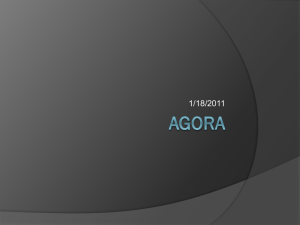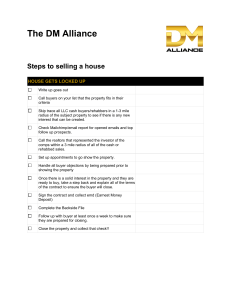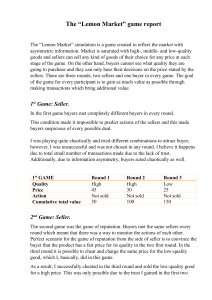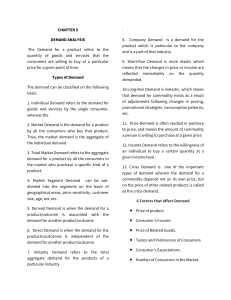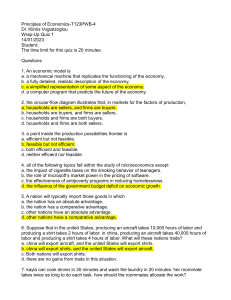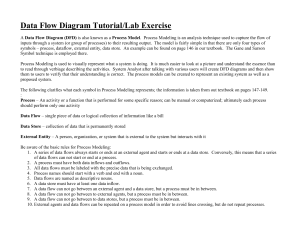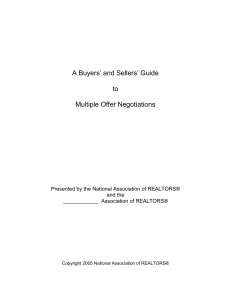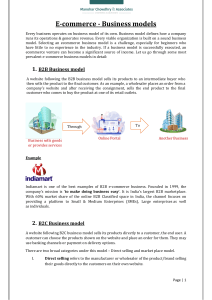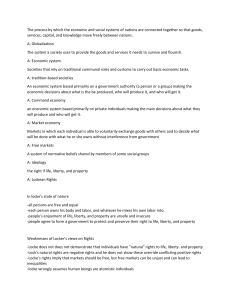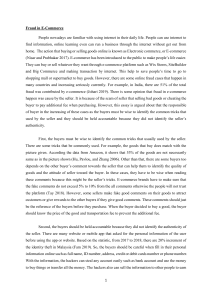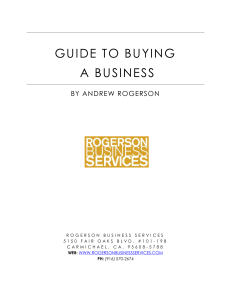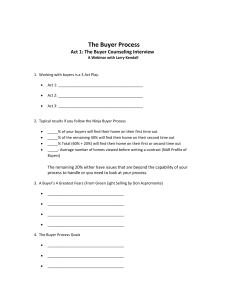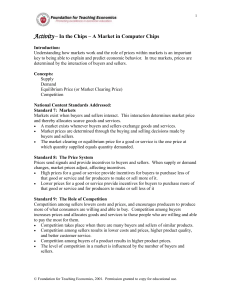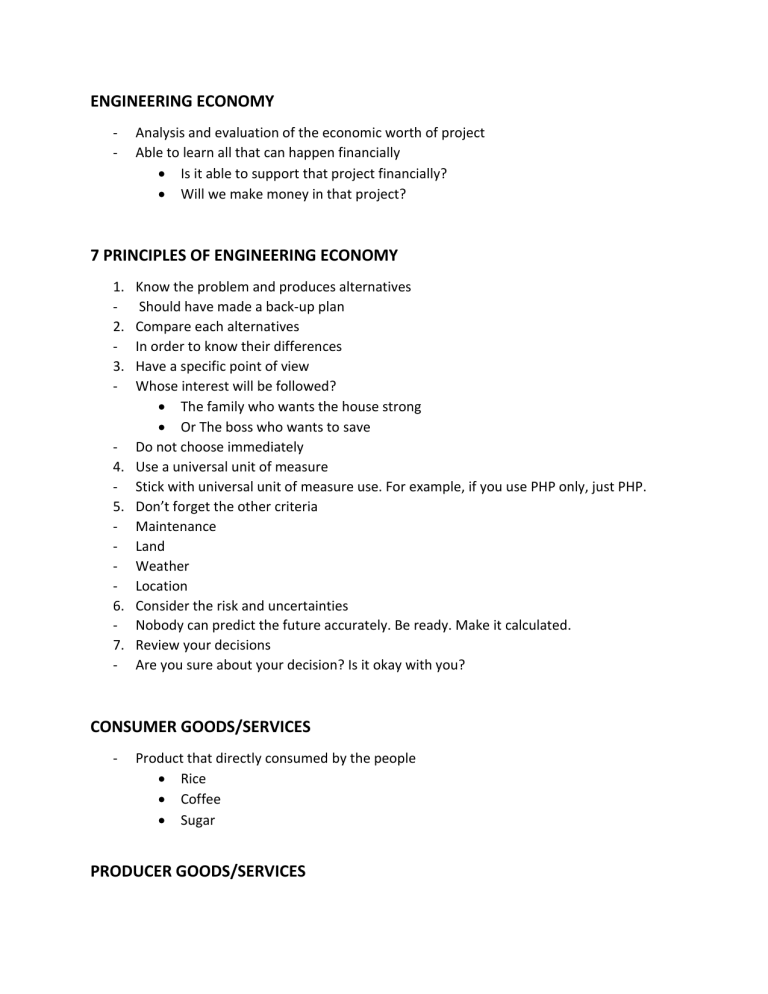
ENGINEERING ECONOMY - Analysis and evaluation of the economic worth of project Able to learn all that can happen financially Is it able to support that project financially? Will we make money in that project? 7 PRINCIPLES OF ENGINEERING ECONOMY 1. 2. 3. - 4. 5. 6. 7. - Know the problem and produces alternatives Should have made a back-up plan Compare each alternatives In order to know their differences Have a specific point of view Whose interest will be followed? The family who wants the house strong Or The boss who wants to save Do not choose immediately Use a universal unit of measure Stick with universal unit of measure use. For example, if you use PHP only, just PHP. Don’t forget the other criteria Maintenance Land Weather Location Consider the risk and uncertainties Nobody can predict the future accurately. Be ready. Make it calculated. Review your decisions Are you sure about your decision? Is it okay with you? CONSUMER GOODS/SERVICES - Product that directly consumed by the people Rice Coffee Sugar PRODUCER GOODS/SERVICES - The one who make the products Producers use a raw material to make consumer goods/services Wood Coffee beans Thread Clothing fabric NECESSITIES - Basic needs of people Clothing Food Water Shelter LUXURIES - Wants of the people People can live without it Cars Cellphone Etc. SUPPLY - Available product in the market Number of quantities available DEMAND - Consumer’s desire to purchase the product Number of customer willing to consume that product LAW OF DEMAND ELASTIC DEMAND - When a product or service's demanded quantity changes by a greater percentage than changes in price. When the price goes up, the demand goes down INELASTIC DEMAND - - Whose percentage change is less than a percentage change in price. For example, if the price of a commodity rises twenty-five percent and demand decreases by only two percent As the price increases then the demand also increase LAW OF SUPPLY LAW OF SUPPLY AND DEMAND - BALANCE OF SUPPLY AND DEMAND CLASSIFICATION OF MARKET STRUCTURE PERFECT COMPETITION - Describes a market structure where competition is at its greatest possible level. There is more seller and buyer SELLER –---------------------------------------------------------------------------------- BUYER -sell a product at identical market price - MONOPOLY There is one seller with many buyer They are the one who produce the product MONOPSONY - Many sellers with one buyer Compatible with labor market A single buyer controls or dominates the demand for goods and services. OLIGOPOLY - Few sellers with few buyers The seller is dependent because they are the only one who compete with the other For example, PETRON, SHELL, AND CALTEX OLIGOPSONY - Many suppliers, few buyers A market for a product or service which is dominated by a few large buyers. The concentration of demand in just a few parties gives each substantial power over the sellers and can effectively keep prices down. LAW OF DIMINISHING RETURN - States that adding an additional factor of production results in smaller increases in output. After some optimal level of capacity utilization, the addition of any larger amounts of a factor of production will inevitably yield decreased per-unit incremental returns.






